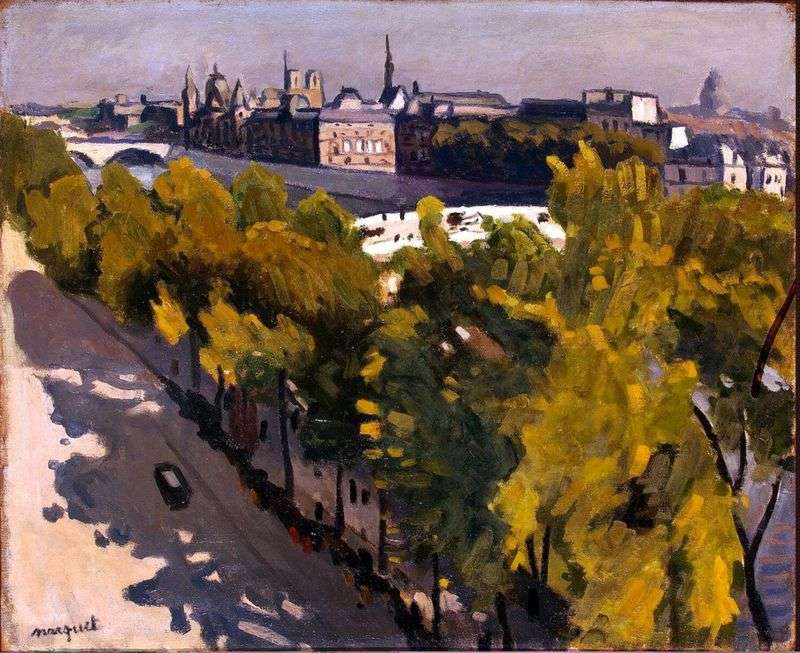
Marquet first appeared together with the Fauvists, and his early paintings are characterized by the same sharp colorfulness that distinguishes the work of the young Matisse. But after a year and a half, Marche departs from this trend. The nature of his work is changing: colors are becoming more restrained and more harmonious, the artist is becoming more and more interested in the problem of the transfer of the atmosphere. As a legacy of Fauvism, Mark retains a tendency toward bold colorful generalizations and the use of pure sonorous color along with valers.
Among the vast number of landscapes created by Marc, about half are views of Paris. With his work, Marche continued and developed the tradition begun by the Impressionists. In his canvases, the appearance of Paris has acquired unforgettably characteristic features. Especially willingly, the artist wrote to the Seine, then glittering under the rays of the sun, then sullen and dark from the autumn rains, then portraying her in the hazy winter days when the river’s waters acquire a yellowish tint…
“Embankment in green” is an excellent example of painting Marche. This picture shows the distinctive feature of his talent: the ability to build a constructively clear, easily visible composition. The horizon is raised, the lines of the embankment diagonally cross the space of the picture. The dynamism of the composition is balanced, however, by the “flat” color: having learned the lessons of Fauvism, Marquet deliberately weakens the color perspective.
In an effort to convey the impression of a sultry summer day, he reduces the color palette of the picture to the few, but absolutely exactly found, ratios: in contrast with the white and pale-yellow planes, as if flooded with light, purple shades seem to be deep and cold. Bright green dense foliage in places “breaks through” reddish, as if brown from the sun, spots. The feeling of a hot day is enhanced by the fact that Marche emphasizes with clear paint the clear contours of shadows cast by trees in the middle of the street.
The combination of opposing principles – a combination of architectural classics and everyday life in the motive itself, dynamism and at the same time a strict calculation of the composition, the use of half tones and pure color – gives Marke’s landscapes a unique characteristic, informs his works both the vital authenticity and the heightened perception inherent in painting. The painting entered the Hermitage in 1930 from the State Museum of New Western Art in Moscow.
 Landscape with a bridge by Albert Marquet
Landscape with a bridge by Albert Marquet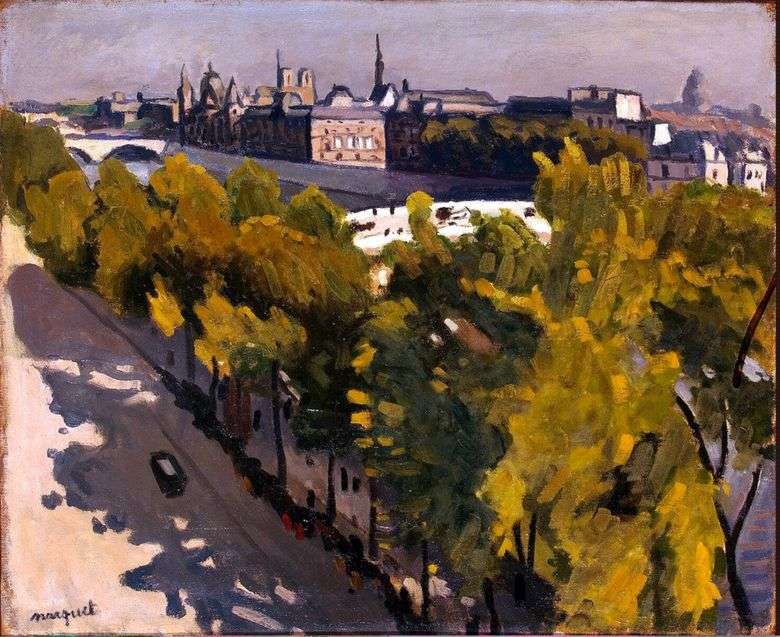 Terraplén en verde – Albert Marquet
Terraplén en verde – Albert Marquet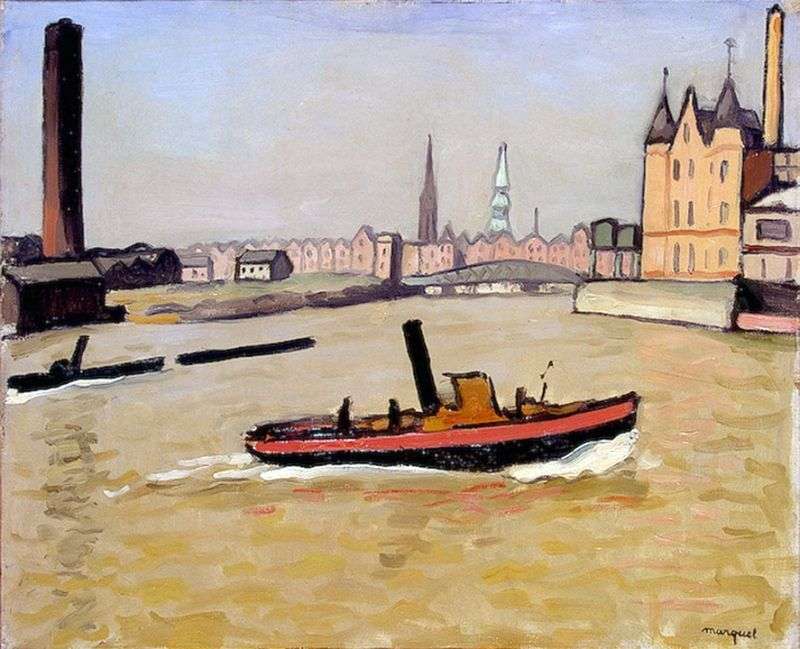 Port of Hamburg by Albert Marquet
Port of Hamburg by Albert Marquet Paris in the winter. Bourbon Quay by Albert Marche
Paris in the winter. Bourbon Quay by Albert Marche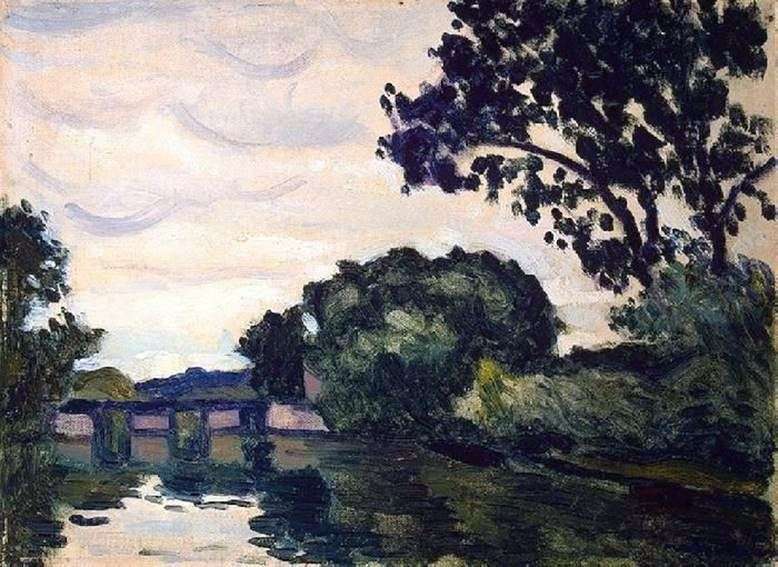 Paisaje con un puente – Albert Marquet
Paisaje con un puente – Albert Marquet Seine embankment by Vincent Van Gogh
Seine embankment by Vincent Van Gogh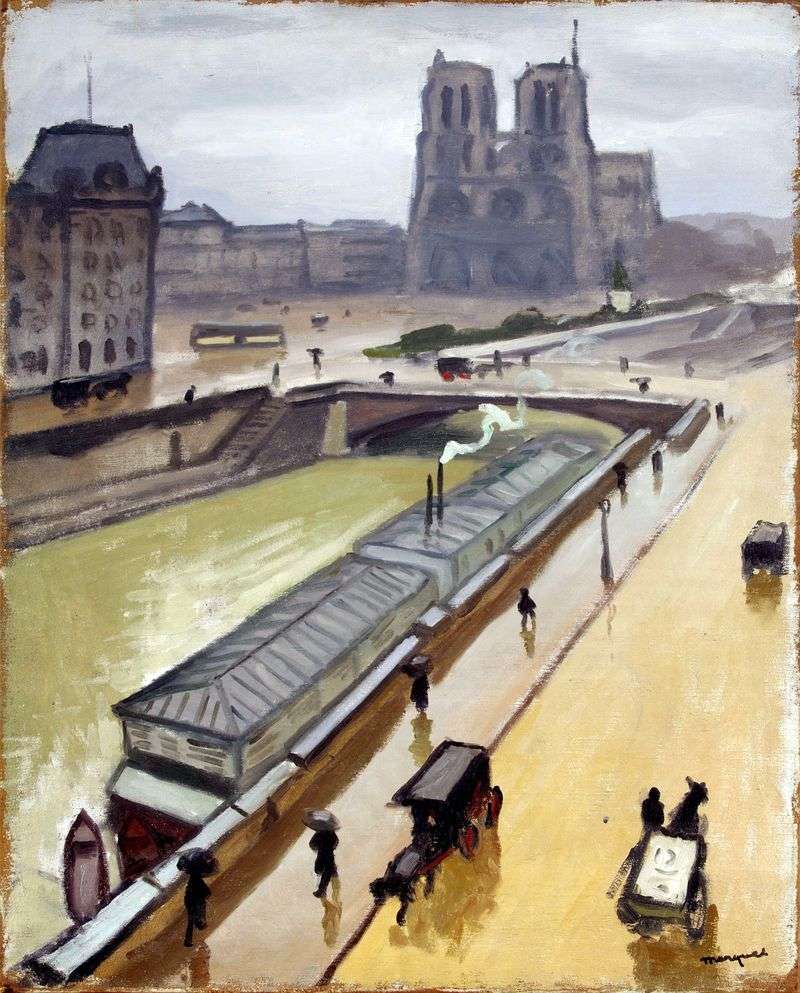 Rainy day in Paris. Notre Dame by Albert Marquet
Rainy day in Paris. Notre Dame by Albert Marquet París en el invierno. Bourbon Quay – Albert Marquet
París en el invierno. Bourbon Quay – Albert Marquet